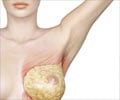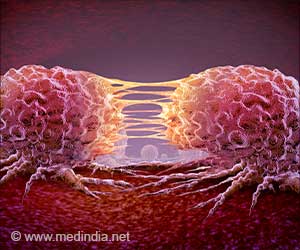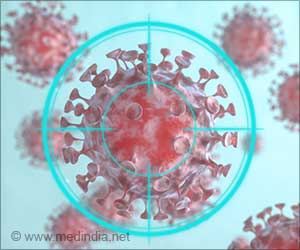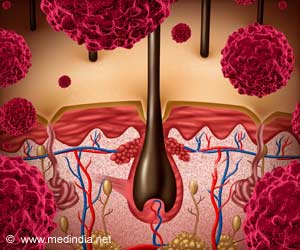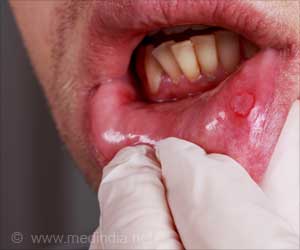
‘High concentrations of nanoparticles combined with multifunctional drug can be a marker for synergistic cancer therapy.’
Tweet it Now
Polymeric micelles are the most important nanotransporters used in treating tumors. Despite improved transport systems, many challenges must still be overcome: insufficient loading, premature release of the drug, no ability to monitor distribution of the drug, and limited accumulation of the drug within the tumor tissue. Longjiang Zhang, Guizhi Zhu, Xiaoyuan Chen, and their team have approached these problems from the other direction. Instead of improving the transporter, they improved the cargo.
The scientists from the National Institutes of Health in Bethesda, USA, and Nanjing University, China, have used a simple but effective trick: they connected two drugs, camptothecin and a special photosensitizer, to make a dimer. Micelles can very efficiently be loaded with an unusually large amount of the dimeric freight (59%).
The dimers are less hydrophilic than their individual components, allowing them to be more easily introduced into the hydrophobic interior of the micelles. For the same reason, the dimers do not exit the micelles as they travel through the blood vessels. This reduces undesirable side effects.
Both of the components of the initially inactive dimer are connected by a disulfide bridge that can only be broken by a glutathione-dependent reaction cascade. Glutathione is a small protein that is present in high concentration in many tumors. Both of the drugs are only activated after the dimer is split within the tumor cells.
Advertisement
In addition, the photosensitizer is a fluorescent dye and it can bind the radioisotope copper-64, which enables visualization with both fluorescence imaging and positron emission tomography (PET). Quantitative PET allows for precise monitoring of the dimer, as well as confirmation of its pharmacokinetics and biodistribution in vivo.
Advertisement
Source-Eurekalert


